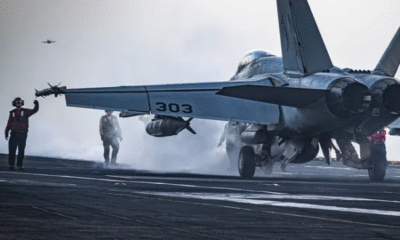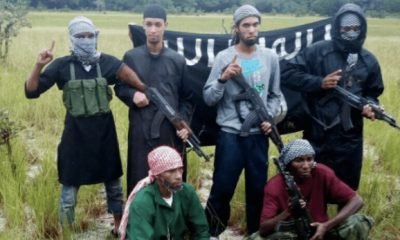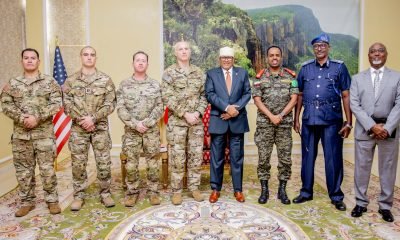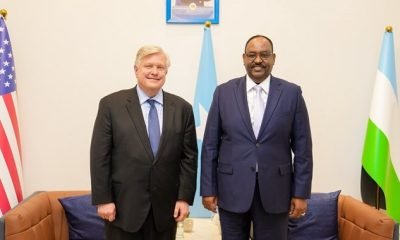Terrorism
Extremist Violence in Africa’s Sahel Intensifies Amid Governance Challenges

A Region Gripped by Instability
The Sahel, a vast and volatile region south of the Sahara Desert, has been besieged by a surge in extremist violence over recent months, culminating in unprecedented attacks that highlight the growing capabilities of Islamist militant groups. In early September, jihadist militants targeted Bamako, Mali’s capital, for the first time in nearly a decade, raising alarm over the expanding reach of insurgents in the region. Just weeks earlier, over 100 civilians and soldiers were killed in a brutal assault in Burkina Faso, underscoring the relentless violence that has ravaged the region.
For more than a decade, the Sahel has been engulfed in a crisis marked by extremist insurgencies, political instability, and military coups. Mali, Niger, and Burkina Faso—three nations central to the Sahel—are now governed by military juntas, each having seized power under the promise of restoring order and security. Yet, rather than stabilizing the region, the security landscape has deteriorated further.
According to the Armed Conflict Location and Event Data Project (ACLED), more than 3,000 civilians were killed in the first half of 2023 alone—a 25 percent increase from the previous six months. The violence stems not only from jihadist groups but also from state security forces accused of widespread abuses.
The Extremist Networks Driving the Violence
Two primary groups dominate the extremist landscape in the Sahel: Jama’at Nusrat al-Islam wal-Muslimin (JNIM), affiliated with al-Qaeda, and the Islamic State in the Sahel. While JNIM has become increasingly embedded in local communities, especially in Mali and Burkina Faso, the Islamic State’s operations are concentrated in the Lake Chad Basin, where it commands less political influence.
Analysts point out that JNIM’s integration with local insurgent factions has granted it broader acceptance among local populations, giving it an advantage over the more fragmented and less politically entrenched Islamic State faction.
“The local populations support [JNIM] more than IS-affiliated groups,” said Shaantanu Shankar, an analyst with the Economist Intelligence Unit. “They have integrated local rebel groups, which have close community ties.”
The insurgents, whether affiliated with al-Qaeda or the Islamic State, have inflicted terror on local populations through relentless attacks, kidnappings, and mass killings. These actions, rights groups say, likely constitute war crimes.
The Sahel’s governance crisis has worsened as the military regimes in Mali, Niger, and Burkina Faso have severed ties with their traditional Western allies. Upon taking power, these juntas withdrew from the Economic Community of West African States (ECOWAS) and formed the Alliance of Sahel States in September, aligning their security policies more closely with Russia while distancing themselves from France and the United States.
However, the introduction of Russia’s Wagner Group, a private military company, has done little to fill the security vacuum left by the withdrawal of Western forces. “There is a huge security vacuum after the withdrawal of the French and American military,” Shankar added. “The financial and logistical capacity of the Russian presence is limited.”
Compounding the instability is a deepening economic crisis. Economic discontent, particularly among the region’s youth, has helped fuel the rise of extremist groups. Militants have successfully recruited individuals from marginalized communities, where job opportunities are scarce, and government services are often nonexistent.
“There are very few opportunities for people in rural Sahel, especially the youth,” said Heni Nsabia, an analyst with ACLED. “People whose families and communities were targeted by state forces seek security, status, and vengeance through these groups.”
Financing Extremist Activities: A Diversified Strategy
Despite their links to al-Qaeda and the Islamic State, the Sahel’s militant groups primarily finance their operations through localized means. They impose taxes on local communities, control the region’s lucrative natural resources—particularly gold—and engage in cattle theft. Trafficking, particularly of narcotics, has also become a critical revenue stream, allowing militants to maintain their operations despite international counterterrorism efforts.
The illegal trade in human trafficking, especially across the Sahel’s porous borders, has also proven profitable, with analysts warning that turmoil in Libya and changes in Niger’s migration policies could exacerbate the crisis.
“The business model that these groups developed is very diversified,” Nsabia explained. “This is why it is difficult to destroy them economically. If you target one aspect, they have other sources of revenue.”
Experts warn that the situation in the Sahel is likely to deteriorate further. With the military juntas more focused on consolidating power than addressing the root causes of extremism, insecurity is expected to worsen.
“It’s a very volatile phase, and security is projected to get worse in the next two years,” Shankar observed.
The extremist threat is no longer confined to the Sahel. Militant groups have extended their reach into West Africa’s coastal nations, including Benin and Nigeria, raising concerns that more stable regions could soon face the same violence that has plagued the Sahel.
“It’s undeniable that things are getting worse,” Nsabia said. “We should not just be talking about the Sahel, but also about Benin and Togo, where militants have ventured inland by more than 200 kilometers.”
International Response: Limited but Crucial Support
In response to the escalating threat, the United States and European nations are intensifying efforts to bolster counterterrorism initiatives in West Africa’s coastal nations. Michael Langley, the head of U.S. Africa Command, indicated that Washington was working closely with Ivory Coast, Ghana, and Benin to recalibrate military assistance in the region.
Still, a significant challenge remains: access to accurate information. The military juntas have imposed severe restrictions on journalism, controlling the narrative and determining who is labeled a jihadist. In Mali, the government has branded ethnic Tuaregs—who have long fought for greater autonomy—as jihadis, even though only a portion of them are aligned with extremist groups.
As the Sahel grapples with increasing violence and political fragility, the international community faces the daunting task of supporting fragile governments while combatting the proliferation of extremist groups. With growing instability extending beyond the region’s borders, the consequences of the Sahel crisis may soon be felt across West Africa and beyond. Whether regional and global powers can prevent further destabilization remains uncertain, as extremist groups continue to exploit the vast and vulnerable terrain of the Sahel.
Somaliland
Profiling Yusuf Shaacir: The Anatomy of an Extremist Inciter
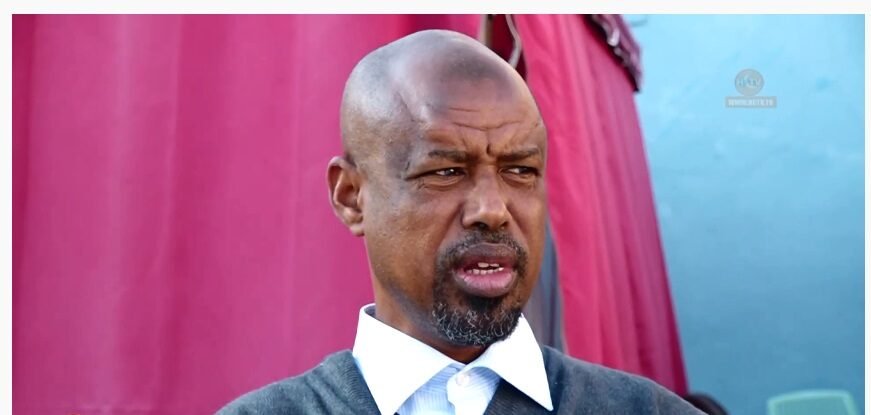
INTELLIGENCE DOSSIER: Yusuf Osman Abdulleh (Yusuf Shaacir) – The Anatomy of an Extremist Inciter.
Subject: Yusuf Osman Abdulleh (aka Yuusuf Shaacir)
Status: High-Risk Extremist Agitator / Potential Terror Link
Location: Hargeisa, Somaliland
Role: Former Advisor to the House of Representatives (Somaliland); Member of Federal Govt. of Somalia Education Committee
Executive Summary: The Self-Appointed “Fighter”
This dossier profiles Yusuf Osman Abdulleh, known publicly as Yusuf Shaacir, a prominent and increasingly dangerous extremist voice operating within the political and social fabric of Somaliland. Born in the nomadic area of Burao (est. 1970) and lacking formal secular education, Yusuf has transformed from a cultural coordinator into a radicalized agitator.
He has self-appointed himself as a “fighter” for Islam, utilizing this persona to wage a dangerous campaign of incitement against civil society, women’s rights activists, and educational institutions.
Crucially, intelligence indicates that Yusuf is not acting alone. Security assessments suggest he has been radicalized and potentially funded by external actors to serve as a propaganda machine, with credible links pointing towards the Al-Shabaab terror network.
1. Radicalization Trajectory: From Culture to Extremism
Yusuf’s path to radicalization appears rooted in economic grievance and professional failure. Formerly affiliated with the Hargeisa Cultural Centre (HCC) as a coordinator for poets, he was dismissed following complaints from the artists he managed.
The Pivot: Post-dismissal, Yusuf pivoted from cultural work to hardline religious agitation. Intelligence sources indicate he was targeted for recruitment by individuals offering financial incentives to weaponize his anger.
The Narrative: He began systematically attacking his former employers, labeling the HCC and the Hargeisa International Book Fair as “secular” conspiracies designed to eradicate Islam from Somaliland. These allegations are unproven but are designed to incite public violence.
Proof of Rhetoric: In his latest speech, Yusuf explicitly declares himself to be “at war” with groups he deems a threat to religion.
2. The Threat Vector: Incitement and Violence
Yusuf’s primary weapon is the weaponization of Takfir (declaring others apostates). By labeling civil society leaders, authors, and human rights defenders as “anti-Islamic” or “atheists,” he is effectively marking them for death in a region where such labels can lead to extrajudicial killing.
Targeting Women: Women’s rights activists are a specific focus of his vitriol. One activist noted, “I am afraid that I might be killed on the streets of Hargeisa… When you are called anti-Islam and apostate, you become an easy target for every fanatic.”
Antisemitism: Yusuf propagates virulent antisemitic views. His Facebook posts against Jewish visitors to Hargeisa framed them as dangerous elements, forcing their evacuation to avoid attack. This rhetoric directly feeds into the narratives of global extremist groups. Evidence of Antisemitic Posts
Education as “Haram”: Mirroring the ideology of Boko Haram, Yusuf attacks schools and universities, particularly those enrolling girls, viewing secular education as forbidden. He publicly appealed for the arrest of an individual posting about human biology, misrepresenting science as an attack on Islam.
3. Institutional Infiltration and Terror Links
The most alarming aspect of Yusuf’s profile is his successful infiltration of state institutions, granting his extremist views a veneer of legitimacy.
Former Advisor to Parliament: Despite his extremist rhetoric, the former Speaker of the House of Representatives, Abdirizak Khalif Ahmed, appointed Yusuf as an advisor on the Somali language. The Speaker’s failure to distance himself from Yusuf’s fanaticism raises serious security questions.
Former Federal Government Role: Yusuf also sits on a committee for the Ministry of Education of the Federal Government of Somalia, a dangerous position for an individual who opposes secular education.
Al-Shabaab Connection: Security experts and intelligence agencies investigating Yusuf believe there is a strong probability of a connection to Al-Shabaab, the Al-Qaeda affiliate responsible for scores of deaths in the region. His operational pattern—using social media to recruit youth and incite violence—aligns perfectly with the group’s recruitment strategy.
4. Digital Footprint and Evidence
Yusuf utilizes social media platforms to disseminate his hate speech, reaching audiences far beyond Somaliland.
Primary Channels:
Facebook Page: Abw.YuusufShaacir
Facebook Account: Yuusuf Shaacir Personal
Video Evidence of Extremist Speeches (Somali Language):
Speech 1: Declaration of War on Secularism
Speech 2: Incitement Against Civil Society
Speech 5: Targeting Individuals
Speech 6: Antisemitic Commentary
Facebook Video: Mobilization Call
Conclusion: A Clear and Present Danger
Yusuf Shaacir represents a critical threat to the peace and tolerance that are the hallmarks of Somaliland society. He is not merely a conservative critic; he is an active agent of radicalization, using the cover of state employment to legitimize a campaign of terror and incitement.
His actions violate Article 10 of the Somaliland Constitution and align with the UN definition of violent extremism. Immediate containment and legal action are required to dismantle the platform of this self-appointed “fighter” before his rhetoric converts into lethal action.
Comment
New Year’s Eve Terror Plot Stopped: FBI Says LA Was Hours From Coordinated Bombings
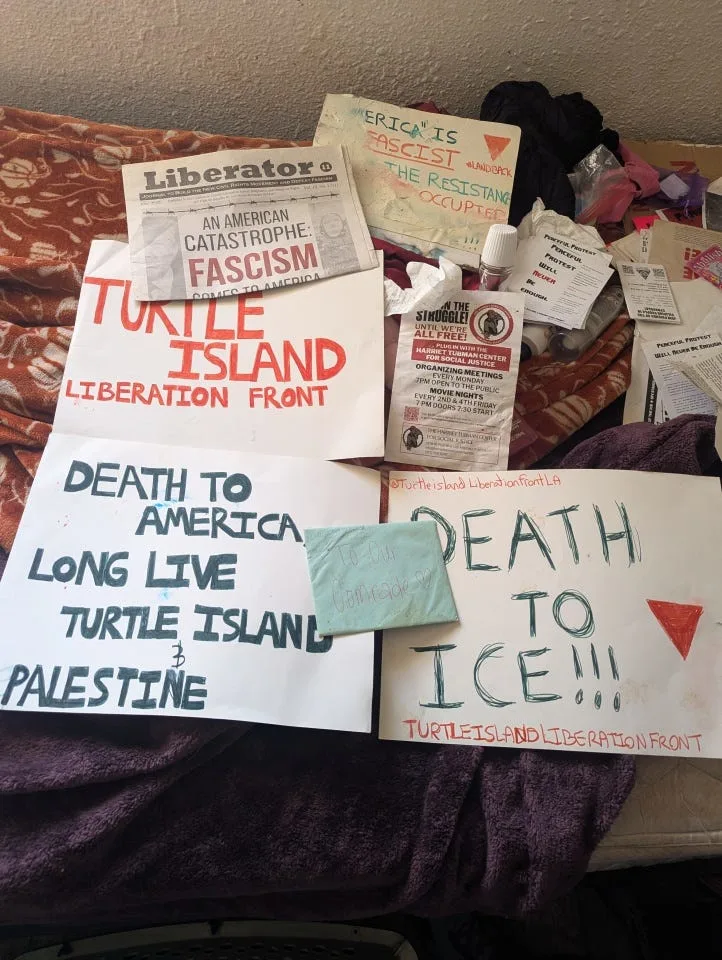
Officials say the plot was “credible,” coordinated, and ideological. What the FBI stopped in the California desert reveals how fast fringe movements can turn violent.
Federal authorities say they disrupted a planned New Year’s Eve terror attack in Southern California, arresting five individuals linked to a radical pro-Palestinian extremist cell accused of preparing coordinated bombings across the Los Angeles region. The case, now unfolding in federal court, underscores growing concerns among U.S. security agencies about the intersection of global political causes and domestic extremist violence.
According to law enforcement officials, four suspects were arrested last week in Lucerne Valley, a remote area of the Mojave Desert east of Los Angeles, where they were allegedly testing improvised explosive devices. A fifth suspect was taken into custody separately in New Orleans and is believed to be connected to the same network. Investigators describe the threat as “credible,” with evidence suggesting the group was moving from ideological planning to operational execution.
The four defendants charged in California — Audrey Ilene Carroll, 30; Zachary Aaron Page, 32; Dante Gaffield, 24; and Tina Lai, 41 — face federal counts including conspiracy and possession of an unregistered destructive device. Prosecutors allege the group intended to plant explosive devices at multiple sites across Los Angeles and Orange County, targeting at least five businesses identified as logistics or commercial centers, timed to detonate at midnight on New Year’s Eve.
Beyond the holiday plot, court filings indicate the suspects also discussed future attacks against U.S. Immigration and Customs Enforcement facilities and vehicles, including the use of pipe bombs early next year. In recorded communications cited by prosecutors, Carroll allegedly said such attacks would “take some of them out and scare the rest,” language that federal officials say highlights the group’s willingness to escalate violence against law enforcement.
The suspects are accused of belonging to an offshoot of the Turtle Island Liberation Front (TILF), a little-known but increasingly scrutinized group that blends pro-Palestinian activism with anti-government, anti-capitalist, and anti-law-enforcement ideology. According to the FBI, the defendants communicated through an encrypted Signal chat called “Order of the Black Lotus,” which one member reportedly described as “radical.” Investigators say searches of the suspects’ homes uncovered extremist propaganda, TILF-linked materials, and a detailed outline of the alleged attack plan.
Attorney General Pam Bondi described the arrests as the prevention of “a massive and horrific terror plot,” while FBI Director Kash Patel said the case illustrates how ideological extremism — particularly when paired with calls for “direct action” — can rapidly translate into domestic terrorism. Los Angeles Police Chief Jim McDonnell echoed that assessment, crediting inter-agency coordination with averting what he called a potential tragedy.
The case also complicates broader public debates around protest movements and political activism. While TILF publicly frames itself around decolonization, indigenous sovereignty, and Palestinian solidarity, federal officials argue the group’s rhetoric explicitly rejects peaceful protest and embraces violence as a necessary tool.
For U.S. authorities, the foiled plot serves as a warning rather than a conclusion. Investigators say the inquiry remains active, with efforts underway to determine whether additional individuals or cells were involved. As New Year’s Eve approaches, the arrests reinforce a stark reality: the most serious terror threats are not always imported — they can grow, organize, and arm themselves quietly at home.
Terrorism
AFRICOM UNLEASHED: ISIS AND AL-SHABAAB UNDER HEAVY FIRE

U.S. Airstrikes in Somalia Surge to Record 109 After New Operations in Puntland and Jubaland.
U.S. military activity in Somalia has reached unprecedented levels, with seven new airstrikes conducted in late November and early December pushing the annual total to at least 109 strikes—the highest ever recorded in the country’s history.
The latest operations targeted ISIS-linked militants entrenched in the remote mountains of Puntland and an al-Shabaab position in Jubaland, underscoring Washington’s intensifying counterterrorism focus across Somalia’s fractured north and south.
According to U.S. Africa Command (AFRICOM), the first series of strikes hit militant hideouts on Nov. 26, 27 and 28 in a rugged zone approximately 37 miles southeast of Bosaso.
Additional strikes followed on Dec. 1, 2 and 3 in the same mountainous region, an area long known for its complex cave networks that ISIS fighters have used to evade Somali and U.S.-backed security forces.
A separate Dec. 3 strike targeted an al-Shabaab site near Kobon in southern Jubaland. AFRICOM released no casualty figures and provided no information on aircraft platforms or weapons employed.
The escalation comes shortly after AFRICOM commander Gen. Dagvin Anderson visited Puntland, pressuring regional authorities to widen their campaign against ISIS elements operating outside Mogadishu’s political reach.
Unlike other Somali regions, Puntland maintains semi-autonomous structures and has been one of the main local partners for U.S. counterterror missions—cooperation strengthened precisely because it bypasses the federal government.
This year’s total far exceeds earlier peaks. Under President Donald Trump, AFRICOM conducted 63 airstrikes in 2019 and 219 across his first four-year term. President Joe Biden approved 51 strikes over four years, according to the New America Foundation.
President Barack Obama authorized 48 over eight years. The 2024 tally therefore marks a dramatic acceleration, reflecting a renewed U.S. willingness to strike militant networks aggressively ahead of their anticipated expansion into coastal and urban zones.
Washington’s involvement in Somalia stretches back decades, but its modern counterterror strategy crystallized after the 2006 U.S.-backed Ethiopian intervention that toppled the Islamic Courts Union. Al-Shabaab emerged from that upheaval, launching its first major suicide attack the same year.
Somalia’s ISIS branch formed later, in 2015, after a faction of al-Shabaab broke away and pledged loyalty to the Islamic State—anchoring itself in Puntland’s mountains, where Somalia’s fragmented governance has enabled militant entrenchment.
The surge in U.S. strikes now signals a deeper strategic concern: both Islamic State and al-Shabaab elements are adapting, exploiting ungoverned spaces while Mogadishu remains engulfed in internal political turmoil.
For Washington, the Red Sea corridor’s volatility makes Somalia’s militant networks more than a local threat—they are a regional accelerant at a time when global trade routes face cascading instability.
Terrorism
New Intelligence Confirms Houthi Support to ISIS in Somalia

WARYATV Exclusive: The Terror Partnership No One Saw Coming.
Intelligence obtained exclusively by WARYATV reveals a dramatic escalation in regional security threats, as a new confidential report confirms that Yemeni Houthi forces have been providing direct military and technical assistance to ISIS militants operating in Somalia.
This emerging alliance—bridging a Middle Eastern insurgent movement and one of Africa’s most dangerous terrorist groups—marks a profound shift in the operational landscape of jihadist networks across the region.
According to the report, ISIS fighters in Somalia have received specialized training from Houthi operatives in areas such as intelligence gathering, drone construction, and the deployment of explosive-equipped unmanned aerial systems.
These capabilities have played a decisive role in ISIS’s ongoing insurgency in Puntland, where the group has waged a grinding war for more than a year without decisive defeat.
Security officials say the first major sign of this partnership surfaced early in the conflict, when ISIS began deploying small, weaponized drones—far more sophisticated than anything previously documented in Somalia.
These drones have killed and injured Puntland security personnel, destroyed military vehicles, and allowed ISIS to conduct persistent surveillance over troop positions.
The report concludes that such capabilities were “beyond the technical reach of ISIS prior to direct external assistance,” indicating a structured training pipeline.
WARYATV previously uncovered indications of covert cooperation between jihadist groups such as Al-Shabaab, Al-Qaeda, ISIS, and Yemeni Houthi factions.
The Secret Maritime Corridor Linking Yemen’s Houthis to Somalia’s Militants
The new intelligence confirms that these links have evolved into a more formalized partnership—one that risks shattering regional security balances and opening new fronts in the Horn of Africa.
The strategic danger is clear: a multi-national extremist ecosystem is emerging, able to transfer technology, expertise, and battlefield tactics across borders.
Such collaborations amplify the lethality of each group individually and create a resilient network capable of adapting to military pressure.
The growing concern has reached international military leadership. AFRICOM Commander Gen. Dagvin Anderson—who recently toured Ethiopia, Somaliland, and Puntland—issued his own warning.
The United States, he said, is increasingly alarmed by the security trajectory in the Horn of Africa and views strengthened cooperation with Somali security forces as essential to countering shared threats.
General Anderson emphasized that AFRICOM intends to deepen intelligence coordination and counterterrorism support, highlighting the need for regional governments to unify against emerging hybrid militant alliances.
The confidential report’s conclusion is stark: if the Houthi–ISIS operational pipeline is not disrupted, the Horn of Africa could face the most technologically capable and internationally networked terrorist threat in its modern history.
US Deepens Security Ties with Puntland in Counter-ISIS Campaign
AFRICOM Chief Reports Surge in Islamic State Fighters in Northern Somalia
Terrorism
Washington Goes Hardline — Antifa and Allies Under Federal Investigation

U.S. Attorney General Pam Bondi has directed federal law enforcement to intensify investigations into domestic extremist groups, including organizations associated with the anti-fascist antifa movement, according to an internal memo obtained by Reuters.
The directive marks one of the most sweeping expansions of domestic terrorism scrutiny in recent years, signaling a significant shift in the Justice Department’s priorities.
The memo, distributed Thursday to federal prosecutors and multiple law enforcement agencies, instructs the Justice Department to elevate cases involving suspected domestic terrorism and to pursue not only violent offenses but also potential financial crimes.
Bondi specifically asked investigators to examine “tax crimes” involving groups accused of defrauding the Internal Revenue Service, framing financial misconduct as part of a broader pattern of extremist activity.
“These domestic terrorists use violence or the threat of violence to advance political and social agendas,” Bondi wrote in the memo, listing a broad set of ideological positions that she said required heightened attention.
Among them were opposition to immigration enforcement, “extreme views” supporting mass migration and open borders, as well as anti-capitalist, anti-American, or anti-Christian sentiments. She argued that these ideologies could serve as a gateway to violence or organized disruption.
Bondi ordered the FBI’s Joint Terrorism Task Forces to prioritize investigations into such groups and to coordinate closely with prosecutors on potential charges.
She also directed federal law enforcement agencies to review their intelligence holdings and turn over any relevant material, particularly information involving antifa-aligned networks.
The memo represents a consolidation of long-running concerns within conservative political circles that left-wing groups pose an escalating threat to public safety.
Critics of the approach have argued that the definition of “extremism” risks becoming overly broad and could sweep up constitutionally protected political activity.
Supporters contend that the rise of politically motivated violence, regardless of ideology, requires a muscular federal response.
The Justice Department has not commented publicly on the memo, and it remains unclear how many active investigations may fall under the newly expanded mandate.
But Bondi’s directive suggests that federal authorities are preparing to take a far more aggressive posture toward groups they believe blur the line between political activism and unlawful conduct.
Terrorism
AFRICOM Goes All-In: Massive Strike Wave Hits Jihadists

Trump Administration Expands Air War in Somalia Against ISIS-Somalia and Al-Shabab.
The United States has sharply escalated its military campaign in Somalia, carrying out more than 100 airstrikes so far this year—over ten times the number launched during President Biden’s final year in office—marking one of the most aggressive counterterrorism operations in the region in more than a decade.
U.S. Africa Command (AFRICOM) confirmed the figures Friday, underscoring a significant shift in the Trump administration’s counterterrorism posture across the Horn of Africa.
The strategy centers on dismantling ISIS-Somalia cells in the north and degrading al-Shabab’s entrenched networks across central and southern Somalia.
The latest strike, conducted Tuesday in Puntland, involved a multi-hour confrontation that local officials described as one of the most intense U.S.-backed engagements in the area in recent years.
While AFRICOM maintained that no American troops conducted ground operations, multiple local sources reported the use of MQ-9 Reaper drones followed by helicopter deployments around a large cave complex believed to house ISIS leadership.
AFRICOM stated only that “specific details about units and assets will not be released,” citing operational security.
Local reporting indicated that up to ten ISIS fighters were killed and that a senior militant figure may have been among the casualties.
Somali authorities said the operation was conducted in full coordination with the Federal Government of Somalia, which has long sought deeper U.S. involvement against insurgent groups.
The escalation comes as Washington attempts to prevent ISIS-Somalia from evolving into a new regional safe haven capable of attracting foreign fighters—a pattern familiar from Iraq, Syria, and parts of the Sahel.
Among Western security analysts, there is growing concern that ISIS-Somalia’s recruitment networks remain active even as the group’s territorial control has shrunk.
But the intensified U.S. focus on ISIS has raised alarms about an emerging imbalance.
Al-Shabab, al-Qaeda’s East African affiliate and still the most powerful militant organization in Somalia, has exploited the shift in U.S. targeting priorities to reassert itself across central and southern regions.
Ahmed Soliman, a senior researcher at Chatham House, warned that al-Shabab is “leveraging shifting international focus to reconsolidate” in areas where Somali forces remain overstretched or divided.
The Federal Government’s strained relationships with regional states such as Puntland and Jubaland have complicated joint operations, allowing militants to re-establish influence in contested areas.
Despite these structural challenges, the Trump administration has made clear it intends to push harder. Former AFRICOM commanders have framed the campaign as necessary to prevent Somalia from becoming a launchpad for global terrorism. “The U.S. is actively pursuing and eliminating jihadists,” former commander Gen. Michael E. Langley said earlier this year.
With warplanes now flying routine missions from U.S. Navy carriers and the tempo of strikes steadily rising, Washington’s counterterrorism efforts are entering a new phase—one defined by rapid escalation, high-intensity engagements, and a renewed willingness to target militant networks before they can regenerate.
Whether this makes Somalia more stable—or simply shifts the conflict into a new cycle—remains an open question.
Terrorism
After D.C. Ambush, U.S. Launches Largest Green Card Reassessment in Decades

The Biden-era resettlement of Afghan nationals is once again under fierce scrutiny after the U.S. Citizenship and Immigration Services announced a sweeping re-examination of green card holders from 19 “countries of concern.”
The move came less than 24 hours after a targeted shooting near the White House left one National Guard member dead, another critically wounded, and reignited a national debate over vetting failures.
USCIS Director Joseph Edlow said Thursday that President Donald Trump had ordered “a full-scale, rigorous reexamination” of every green card issued to immigrants from the designated countries, which include Afghanistan, Iran, Haiti, Syria, Venezuela, and others flagged in a June presidential proclamation for deficiencies in security screening.
The announcement marks the most expansive review of lawful permanent residents in decades, and it signals a dramatic shift in how the administration intends to treat thousands of immigrants who were admitted legally but are now subject to potential revocation if deemed improperly vetted.
A Shooting With Far-Reaching Consequences
The policy shift was triggered by Wednesday’s attack in Washington, D.C., when two National Guard members deployed under Trump’s federal policing initiative were ambushed near the Farragut West Metro station.
Twenty-year-old Specialist Sarah Beckstrom later died of her injuries. Staff Sergeant Andrew Wolfe, 24, remains in critical condition.
Federal investigators identified the suspect as 29-year-old Rahmanullah Lakanwal, an Afghan national who arrived in the United States in September 2021 under Operation Allies Welcome, the emergency evacuation program launched during the Taliban takeover.
A relative told NBC News that Lakanwal served in the Afghan Army for a decade, including alongside U.S. Special Forces in Kandahar. The CIA later confirmed he had worked with American intelligence as part of a partner force until the U.S. withdrawal.
He ultimately settled in Bellingham, Washington, with his wife and five children.
Investigators say Lakanwal drove across the country before carrying out what authorities describe as a deliberate ambush.
Trump: “We Must Re-Examine Every Single Alien” From Afghanistan
In a video statement Thursday evening, President Trump called the shooting “an act of terror” and criticized the Biden administration’s decision to admit tens of thousands of Afghans in 2021.
“We must now re-examine every single alien who entered from Afghanistan under Biden,” Trump said, calling the attack “a crime against our entire nation.”
Shortly after his remarks, USCIS announced that all immigration processing for Afghan nationals would be halted indefinitely while new vetting protocols are developed.
A Policy With Uncertain Reach
It remains unclear how many of the roughly 76,000 Afghans evacuated in 2021 — as well as thousands of green card holders from other listed countries — may be subject to reviews, interviews, or possible revocation proceedings.
Legal experts say the policy is likely to face legal challenges, though the administration has made clear it intends to pursue an aggressive reassessment of prior admissions.
Local officials, meanwhile, urged caution in assigning collective blame.
San Diego–based AfghanEvac, a major resettlement advocacy group, said Afghan wartime partners are among the most heavily vetted immigrants in the U.S. system. “This act should not be used to define or diminish an entire community,” the group said.
But Thursday’s developments reinforce how a single violent incident — especially when tied to a national security program — can reshape federal policy overnight.
For now, federal officials say the investigation into Lakanwal’s motive is ongoing, and that prosecutors are treating the case as a potential act of terrorism.
Somalia
Foreign Fighters Among Casualties in U.S.-Backed Raid on Somali ISIS Cell

U.S. special operations forces joined Puntland’s elite counterterrorism units in a major assault on an Islamic State stronghold in Somalia’s Balade Valley, according to Somali security officials briefed on the operation.
The coordinated strike—one of the most significant joint actions in Puntland in recent years—unfolded overnight, when U.S. troops were inserted into the rugged valley aboard MH-60 helicopters while MQ-9 Reaper drones conducted precision strikes on suspected militant compounds in the Habarbakuuje and Mareero areas.
Security officials said the targeted enclave had served as a fortified hideout for a small but hardened ISIS cell, including foreign fighters from Syria, Turkey and Ethiopia.
The assault triggered an intense gun battle that lasted between two and four hours as militants attempted to repel advancing forces from defensive positions carved into the mountainsides.
Early assessments indicate that a senior ISIS commander and several of his aides were killed, with officials estimating between five and ten militant casualties.
Joint forces also destroyed weapons stockpiles and equipment believed to support the group’s gold-mining operations—an increasingly critical revenue source fueling ISIS activities in Puntland.
Puntland authorities have vowed to dismantle ISIS networks across the region by the end of 2025, and U.S. support has expanded in recent months.
American drones and intelligence assets have targeted ISIS hideouts across the Bari mountains, helping push fighters from their traditional strongholds into more isolated terrain.
A Puntland security official said the latest operation reflects “tightened coordination” with U.S. forces and forms part of a broader campaign to degrade ISIS’ financial pipelines and operational reach.
Washington has not yet publicly commented on the strike, but U.S. counterterrorism operations in northern Somalia are typically authorized under long-standing missions aimed at disrupting transnational extremist groups.
-

 Analysis10 months ago
Analysis10 months agoSaudi Arabia’s Billion-Dollar Bid for Eritrea’s Assab Port
-

 Opinion17 years ago
Opinion17 years agoSomaliland Needs a Paradigm Change: Now or Never!
-
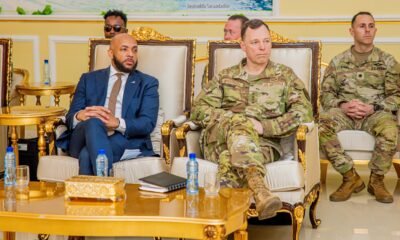
 Interagency Assessment4 days ago
Interagency Assessment4 days agoTOP SECRET SHIFT: U.S. MILITARY ORDERED INTO SOMALILAND BY LAW
-

 ASSESSMENTS9 months ago
ASSESSMENTS9 months agoOperation Geel Exposes the Truth: International Community’s Reluctance to Embrace Somaliland as a Strategic Ally
-
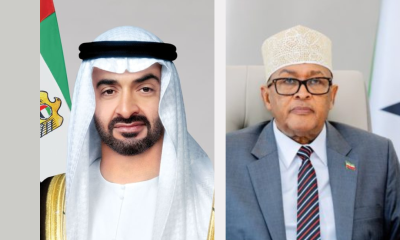
 Somaliland11 months ago
Somaliland11 months agoSomaliland and UAE Elevate Ties to Comprehensive Strategic Partnership
-

 EDITORIAL1 year ago
EDITORIAL1 year agoDr. Edna Adan Champions the Evolving Partnership Between Somaliland and Ethiopia
-

 Africa2 years ago
Africa2 years agoHow Somaliland Could Lead the Global Camel Milk Industry
-
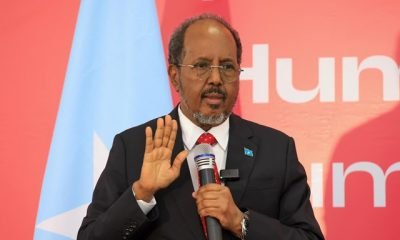
 ASSESSMENTS6 months ago
ASSESSMENTS6 months agoA Critique of the Hassan Sheikh Mohamud Administration and the Halane Enigma






